A tornado warning was issued for southern Winnipeg just as Willard Metzger, Mennonite Church Canada’s executive director, was giving the final announcements at Assembly 2014 on July 5. Should delegates proceed to their seminars or should they stay in the Loewen Athletic Centre on the campus of Canadian Mennonite University (CMU), where the assembly was held? After a few minutes the warning was dropped.
The storm warnings parallelled the assembly theme of focussing on Jesus and his disciples in the boat during the storm in Mark 4, as well as the mood that has prevailed in MC Canada over the past few years—a mood of confusion and questions, and, for some, of fear.
‘Leave and go’
Brian Quan, English pastor at Toronto Chinese Mennonite Church, set the assembly on its journey across the stormy Sea of Galilee on July 3 with his question: “‘Leave and go’: What are we being asked to leave behind? Where is God calling us?” His talk was a precursor to the two major assembly business reports from the Future Directions and Being a Faithful Church (BFC) task forces, which both asked difficult questions about the future of MC Canada.
Said Quan: “If we are called to be people of God, then we are in this boat. We are in this boat together. It is not a big boat, but a resilient one. Being in the open water with this boat is risky business. This is not an accident, this is where God has called us to be. Jesus has led us into uncertain and unpredictable places. He has something for us to learn together. He has something for us to discover together. These are wild and uncertain times, but filled with hope.
. . . Let us begin to discover this together, in this assembly, in our city, in our communities and with our families. Let’s go!”
‘Do not be afraid’
The next morning, David Driedger, associate pastor at First Mennonite Church in Winnipeg, spoke on the nature of discernment, telling assembly participants, “Be not afraid.” He noted that, having grown up on the Prairies, he could talk about the nature of being in a small boat in a storm, just not from personal experience. Quoting the Avett Brothers, he said, “Ain’t it like most people? I’m no different; we love to talk on things we don’t know about.”
“One of the church’s most trusted and most destructive postures in response to what remains unknown . . . is to re-entrench its position as knowing and possessing the truth and then applying that truth to those outside its parameters,” he said.
Even though the BFC process seeks truth, Driedger said he thinks that it misses the mark by purporting to find a final or unassailable truth upon which all can agree. He said that such an idea of truth is something far more like idolatry. If some claim to have the truth and are right, and also claim that others are wrong and are sinful, then they have set themselves up as holders of truth that only God can claim. Instead, he said the church needs to be faithful, attending to each other in the midst of the waves, not claiming to somehow be better or have the final revelation of God’s truth.
What’s in the denomination for the churches?
Later on July 4, Future Directions Task Force members April Yamasaki, pastor at Emmanuel Mennonite Church in Abbotsford, B.C., and Gerald Gerbrandt, president emeritus of CMU, retold the story of Scripture as a drama, in which Act I is the Old Testament, Act II is the story of Jesus, and Act III is the birth of the church. They then continued the drama with further acts in the life of the church, both at the congregational and larger levels. Through telling the first three acts they painted a picture of the people of God that is not static, but constantly changing, always trying to be faithful and follow God in their time. The fourth act is in this time, when congregations and denominations are trying to do the same in a rapidly changing world.
Comparing a 1950s Mennonite church, with its Germanic, white, male pastor, with the congregations that now make up MC Canada, this rapid change is obvious, and it is continuing. Their presentation was followed by a time for table groups to share about their congregations and how they are reflecting the changing and ongoing nature of God’s people.
It was pointed out in the second Future Directions plenary session, held on July 5, that, since the church is no longer seen as the source of authority or guidance in society, Christians feel like they have lost their place in society. Most of this session was spent encouraging table groups to envision what their congregations might look like in 20 years and what support they would like to see from the national and area churches to carry out those visions.
In a seminar later that afternoon, the idea that the congregation—and not the individual or the area/national churches—is the basic unit of the church was brought to the table. How can the national church have a more integrated, simpler and sounder structure is the ongoing focus of the task force, delegates were told.
The denomination has moved from being a clan to something much more akin to a business, with congregations asking what is the “value added” by belonging. The task force asked participants for “top-of-mind” ideas on how to go forward. Suggestions centred on more relationships, more mutual care and doing together what cannot be done alone. Several delegates suggested that the national/area church structures need simplifying, with perhaps only one level beyond the congregation.
(For more, read “The changing face of congregations”)
Unity in the process, not the outcome
Much of the assembly was given over to the BFC task force’s presentation and discussion on sexuality.
Opening the first session, Rudy Baergen, interim pastor at Waterloo North Mennonite Church, Waterloo, Ont., and Jack Suderman, former MC Canada general secretary, presented the results of the BFC 5.0 process. Many congregations participated in the study of the broad sweeps of sexuality, resulting in the task force reporting that the majority of congregations find themselves in the middle, “reflecting historical affirmations” about sexuality, “and at the same time express[ing] a desire to be more compassionate and welcoming of those individuals who are same-sex attracted.”
“Significantly smaller number[s] of responses” either “oppose any revisiting of the historical understanding of biblical sexuality” or “call for more inclusion of persons in same-sex relationships, including welcoming them as members and as committed same-sex partners.”
This characterization was based on an interpretation of the responses of congregations and was not in response to any question posed by the task force, nor expressly answered by congregations. During the final seminar sponsored by the BFC task force on July 5, delegates took the task force to task for suggesting the divisions in the national church.
Based on the divergent results of BFC 5.0, the task force proposed that, rather than trying to find some statement about same-sex sexuality on which all could agree, three other questions should be the focus of further discussion and study:
- God’s gift of unity in Christ is not invalidated by our disagreement. How shall we maintain our unity in Christ as congregations, area/national church while understanding matters of same-sex relationships differently?
- Most responses indicated a desire to be “more compassionate and welcoming of those individuals who are same-sex attracted.” Describe how your congregation hopes to reflect this desire.
- In reviewing the trends from the BFC report, what counsel do you have for the area/national church in light of the different understandings of compassionate responses toward persons that are in same-sex relationships?
In a passionate statement at the July 5 session, Metzger pleaded for new ways of understanding unity within MC Canada. He suggested that if individuals, groups and congregations, perhaps even area churches, would “prayerfully, worshipfully and honestly struggle with the Bible” and come up with different conclusions, then unity can be found in the process and not in the outcome.
Several people, including David Driedger in his plenary presentation, called for the church to listen to the voices of those affected most by these discussions and their outcomes.
Lesbian/gay/bisexual/transgendered/queer people have not been asked for their specific input in the BFC process, and in both seminars and plenary sessions this absence was criticized.
David Tiessen, pastor at Bethel Mennonite Church near Elora, Ont., suggested that the role of the prophet be revived. Prophets were significantly at odds with their culture, but respected the community and were respected, in turn, by the community. Congregations affirming same-sex relationships, while respecting the larger church’s decisions, could be seen as prophets standing outside the larger church and respected by the larger church for carrying a prophetic voice to the church at large. Key, he said, would be neither group attempting to change the other.
The three-point proposal was put to a vote as the next step in the BFC process on July 5, with 263 voting in favour and 30 voting against. Delegates also requested both biblical study material on same-sex sex and a list of materials that congregations could access to continue to study this question specifically.
Seminars, workshops bolster task force discussions
Supporting these two major discussions were many other workshops.
Gordon Zerbe, CMU’s professor of New Testament, led participants in a new look at the Book of Romans, wondering if the first chapter’s discussion of sexuality is as much about sexuality as it is about the feuding groups in the Roman church.
“Navigating the challenge of pluralism” was Lethbridge (Alta.) Mennonite Church pastor Ryan Dueck’s topic, while Chris Lenshyn, associate pastor at Emmanuel Mennonite Church in Abbotsford, B.C., looked at “Exploring Anabaptist presence in a post-Christian landscape.”
Renewal as a spiritual process
In her plenary presentation on July 5, Betty Pries, executive director of Associates Resourcing the Church and a trained mediator and coach, spoke about the renewal of the church as a spiritual process.
She reminded delegates that in the 16th century the Roman Catholic Church responded to the threat of the Reformation in two ways: one was to exclude and destroy the believers who rejected the authority of Rome; the other was to develop a new spirituality that re-grounded the church in Christ. Excluding “others” from Mennonite congregations may not be quite as violent as burning them at the stake, she suggested, but is violent nonetheless.
What the church and individuals within the church need to do, she said, is humbly surrender themselves to God, setting aside their sense of being right, having the answers and knowing the way forward. She explained that this is an attitude of the whole person, expressed in spirituality that sees the main purpose of prayer as listening and not as talking. When this happens, people begin to abide in Christ, listening deeply inside themselves and to others for what the voice of God is saying.
Pries reminded her listeners that Jesus practised this kind of prayer, going into the wilderness for 40 days at the beginning of his ministry and at several other points along it. This, she said, “is not an easy form of prayer. In our attempts to be silent before God we are so often confronted with all that is within us that refuses to be silenced, whether that be to-do lists or old wounds that won’t be healed.”
“Like Jesus, we are called to take time away, to spend time with God,” she said. “But the hard news is that when we do, like Jesus, we will not only encounter God, we will also encounter our demons—our attachments—those things that tempt us to be someone or something other than who we are called to be. Traditionally, the word for ‘attachments’ was actually ‘sin.’ I find myself drawn to the word ‘attachments’ for the simple reason that the word ‘sin’ no longer speaks to many of us. The word ‘attachments’ also forces us to take a hard look at those things that we call good which are not good or those things that we call bad but which are not bad.”
Finally, these prayer disciplines lead people to incarnation, to following Christ who was God-made-flesh, she said, suggesting that, in the current hyper world of images, communications, influences, speed and pressure, the call now is to live out a life centred in Christ—lives of peace, stillness, quiet and listening.
Closing ‘Wild hope’ with ‘wild hope’
July 6’s closing worship service included a “wild hope” communion that avoided quiet background music and finished with a rousing version of the Celtic “My Soul Cries Out” hymn from Sing the Story that was sung and danced to by participants.
Brian Quan returned to the pulpit to ponder again what Jesus was teaching the disciples in the boat on the sea in the storm. Wondering if Jesus was “sleeping with one eye open,” he suggested that a key lesson for the disciples then, and for the church now, is that while it, like Peter stepping out of the boat, may think it knows what to do, a better attitude is that fine line between fear and awe. The church may not know now what to do to move into the future, he said, but when God shows it—and God will—the church will be even more afraid, or perhaps full of awe at God’s power and insight.
Quan concluded with the thought that, while sometimes God’s intervention in the lives of God’s people is spectacular, more often it is in the small things, like being invited to talk about faith issues with Muslim neighbours when we secular Canadian Mennonites think it best to avoid religion in conversation.
For reflection and group discussion, go to the discussion questions related to this article.
To see links to more Assembly content, go to Stories and images of Assembly 2014.


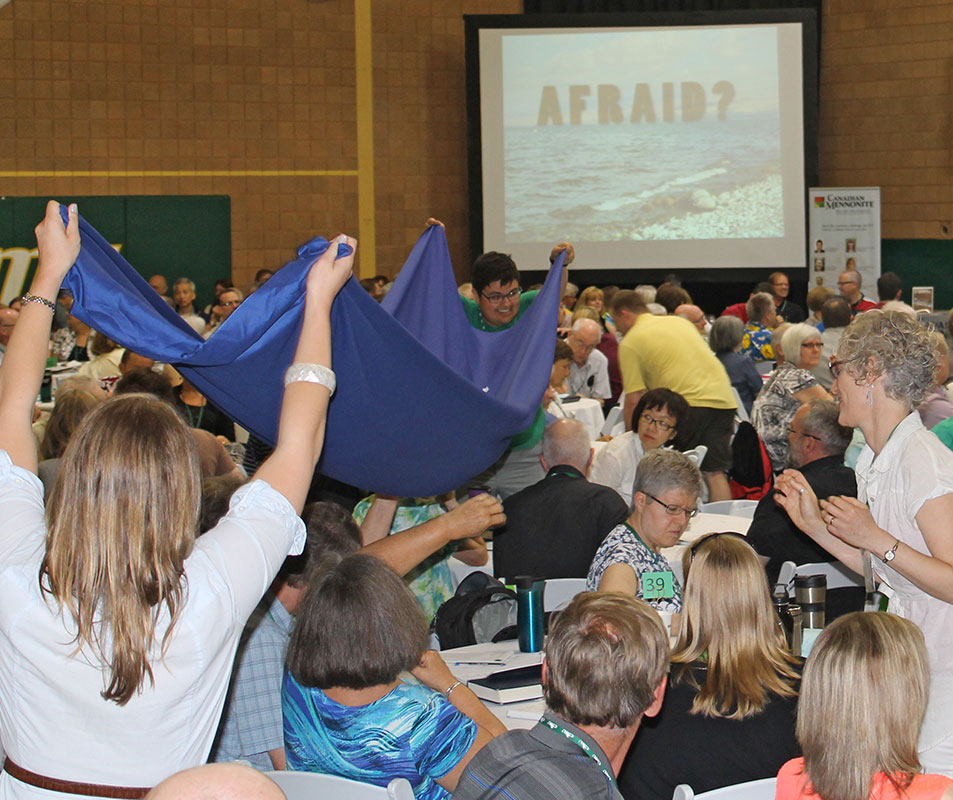

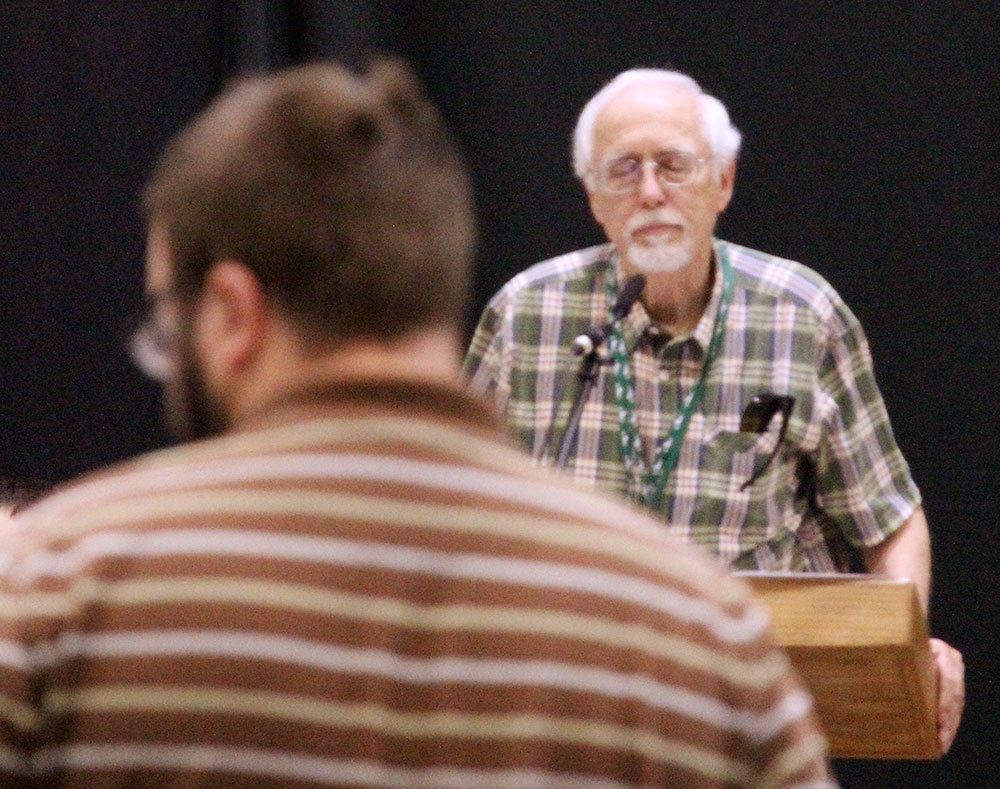
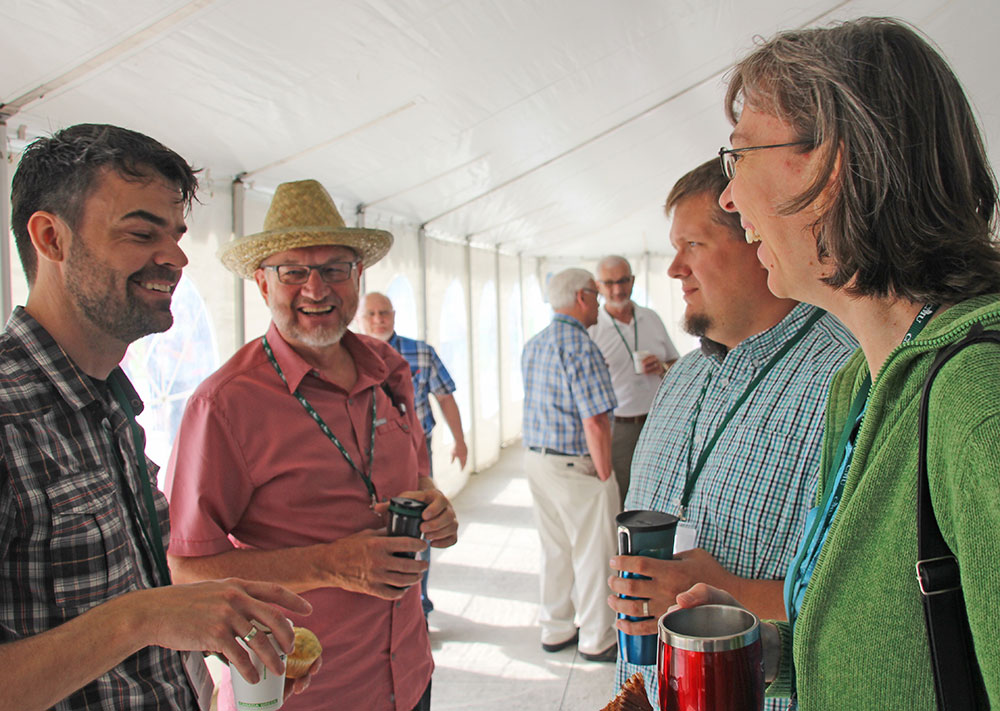
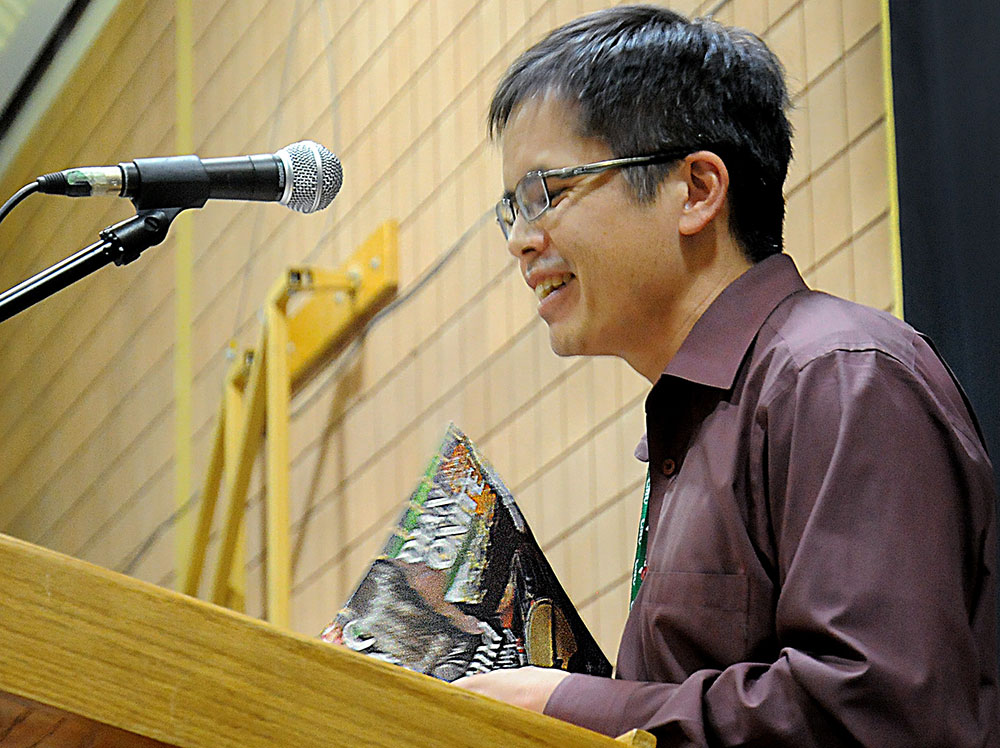
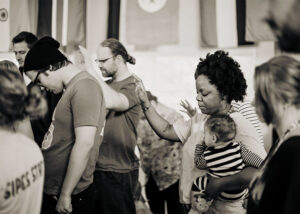


Leave a Reply
You must be logged in to post a comment.